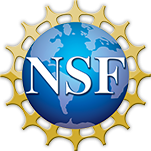Abstract
The biogeochemical processes that occur in marine sediments on continental margins are complex; however, from one perspective they can be considered with respect to three geochemical zones based on the presence and form of methane: sulfate–methane transition (SMTZ), gas hydrate stability zone (GHSZ), and free gas zone (FGZ). These geochemical zones may harbor distinct microbial communities that are important in biogeochemical carbon cycles. The objective of this study was to describe the microbial communities in sediments from the SMTZ, GHSZ, and FGZ using molecular ecology methods (i.e. PhyloChip microarray analysis and terminal restriction fragment length polymorphism (T-RFLP)) and examining the results in the context of non-biological parameters in the sediments. Non-metric multidimensional scaling and multi-response permutation procedures were used to determine whether microbial community compositions were significantly different in the three geochemical zones and to correlate samples with abiotic characteristics of the sediments. This analysis indicated that microbial communities from all three zones were distinct from one another and that variables such as sulfate concentration, hydrate saturation of the nearest gas hydrate layer, and depth (or unmeasured variables associated with depth e.g. temperature, pressure) were correlated to differences between the three zones. The archaeal anaerobic methanotrophs typically attributed to performing anaerobic oxidation of methane were not detected in the SMTZ; however, the marine benthic group-B, which is often found in SMTZ, was detected. Within the GHSZ, samples that were typically closer to layers that contained higher hydrate saturation had indicator sequences related to Vibrio-type taxa. These results suggest that the biogeographic patterns of microbial communities in marine sediments are distinct based on geochemical zones defined by methane.

